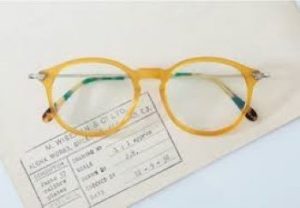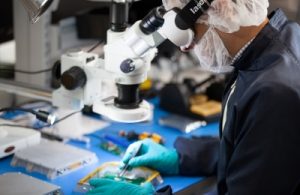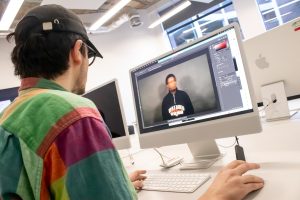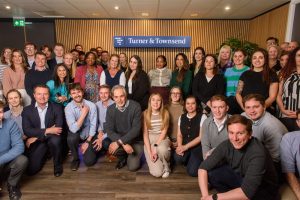‘Gestural’ music gloves worn by Ariana Grande among projects to be developed at university’s new £3.6m lab

A £3.6m laboratory to provide an arts, humanities and technologies space for researchers, entrepreneurs and businesses has opened at the University of the West of England (UWE Bristol).
The Bridge Studios will bring together creative arts, design and technology to pioneer interdisciplinary research using AI, VR, motion capture, immersive audio and collaborative robotics to drive innovation and industry collaboration.
The lab is spread over 500 sq m on the university’s Frenchay campus and features the latest collaborative robotic arms and advanced robotic technology, which will be used for research into data-driven art, craft, design and architecture.
A robotic fabrication lab includes a multi-directional 3m robotic arm which can be used for large-scale 3D printing in architecture and building design.
Another standout feature is an immersive studio with a 7x4m LED screen, which is at the core of the lab’s advanced research capabilities in virtual and immersive technologies.
Motion capture technology will provide highly accurate tracking for human, robot and objects for use in animation or interactive artworks. The Bridge Studios also offers space for exhibitions and performances.
One of the studio’s first research projects is being led by UWE Bristol’s Tom Mitchell, Professor of Audio and Music Interaction, and Dr Dominic Potts, research fellow.
Called ‘Outside Interactions’, it will build on Mitchell’s previous research in developing gestural music gloves which use motion capture and AI to enable wearers to create music with hand movements, and have been used by artists such as Ariana Grande.

Credit: Tom Sparey
MiMu gloves, a wearable musical instrument, allow artists to expressively create music through hand gestures and not be restricted to sitting behind laptops or keyboards when producing music – instead, controlling this technology through the gloves.
The next stage of this research, taking place at The Bridge Studios, will develop high-precision sensors within the gloves that will sense a wearer’s interactions with physical objects.
Rather than embedding sensor technologies within a musical instrument, the project will aim to relocate this technology onto the body, sensing interactions through wearables.
This will remove the rigidity of a physical musical instrument and mean artists can create and perform music through wearable tech in a way that is totally unique to their artistic identity, designed to any shape, scale or structure. It also offers more accessible options for disabled musicians who may face barriers to playing traditional musical instruments.

Credit: Tom Sparey
With £2.3m funding from the UKRI Arts and Humanities Research Council (AHRC), The Bridge Studios will build on the West of England’s rich creative and cultural environment and bring together two growth-driving sectors – creative industries and digital and technologies – identified in the government’s new industrial strategy.
The facility has been designed as a collaborative space for artists and businesses from outside of the university together with researchers and technicians, to break down the barriers between technology and the creative industries, and close the knowledge gap between ‘real world’ and virtually immersive environments.
Tavs Jorgensen, associate professor and academic lead, said: “The Bridge Studios provides a unique opportunity to bring together skills from diverse research disciplines and explore how knowledge from within creative disciplines can cross fertilise with research and innovation within science and technology.”
Arts and Humanities Research Council (AHRC) executive chair Professor Christopher Smith added: “Investing together in the infrastructure that underpins excellent research and innovation will help us deliver long term sustainable skills and economic growth. AHRC is committed to research and innovation which will deliver on the ambitions outlined in the government’s industrial strategy.”








